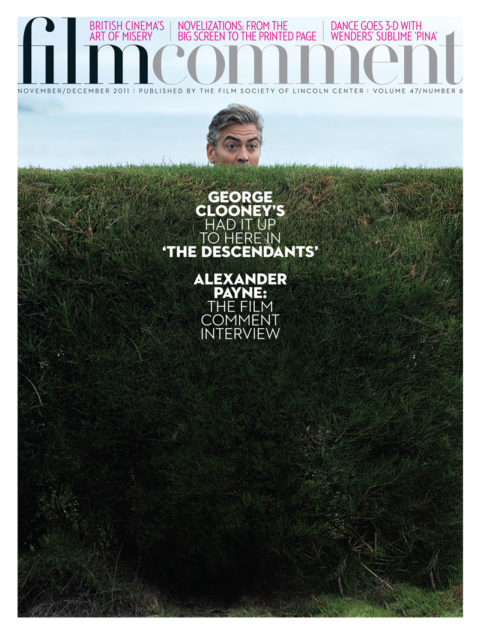
Adapted by Dee Rees from her award-winning 2007 short, Pariah is one of a handful of contemporary coming-of-age features that depict the transformative experiences of adolescent African-American women. It may be the only recent film that also portrays the coming-out process of a young person of color.
As the title suggests, Alike (Adepero Oduye), a 17-year-old lesbian, could be perceived as the ultimate racial and sexual Other. She is introduced in the dynamic first scenes of the film hanging out with her friend Laura (Pernell Walker), a flashy and charming playa, trying to navigate the scene in a local women’s nightclub. Among butch women Alike is initially hard to distinguish from a young man with her dark, baggy clothes, do-rag, and baseball cap. But despite the gangsta pose, her face reveals both wonder and uncertainty in this setting. On the bus home, like a quick-change artist she adjusts her clothes and demeanor, transforming into a feminine teenager. This compelling opening suggests that Pariah will be exploring an exotic subcultural space, but in fact Alike’s story shares the most basic concerns of coming-of-age narratives: affirming burgeoning sexual (and cultural) identities, negotiating friendships, separating from one’s parents, and, overall, learning how to “be in the world” as Rees puts it in the press kit.
An excellent student and promising poet, Alike lives with her small middle-class family in Fort Greene, Brooklyn. Race is important (she has an African name) but without conflict since the world of the film is entirely African-American. Moreover, Alike isn’t conflicted about her sexuality although she hides it from her parents (Kim Wayans and Charles Parnell), as any teen might. Her real struggle is how to express her desires and to attract a girlfriend. Forced by her mother to associate with and eventually befriend Bina (Aasha Davis), a co-worker’s daughter, Alike develops a serious crush.

Alike, like her peers, channels her identity through distinctive fashions and musical savvy. Chameleonlike, she adopts different garb throughout the film, seeking the style and sounds that will represent her with the same authenticity as her poetry. With Laura, who prefers hip-hop, she’s a boyish “OG,” later she mirrors Bina’s multicultural, ethnic Afro-punk accessories, and otherwise resists being straitjacketed by her mother’s wishful, infantilizing pastel-sweater suggestions.
Color is important in the film’s overall design and in Bradford Young’s cinematography. Although the setting is distinct, the action seems to exist outside of a particular physical locale. The characters are often photographed in tight close-ups, large and in sharp focus while background lights melt and form patterns of bright colored dots. This effect recedes as Alike resolves to leave home (as opposed to running away) after which she is shown within a legible local context, first on the streets and, as her perspective matures, on the rooftops overlooking her neighborhood. She also begins to outgrow the unfulfilling borrowed styles that accord with the expressive “conscious” soul music she favors, though maintaining her ties to that which is supportive in her family and friendships.
At 87 minutes, Pariah feels a little abbreviated, and one can sense the short that preceded the feature. Perhaps this is why the film’s frustrated parents feel under-motivated. The reasons for their troubled marriage and her mother’s hostility towards her daughter’s development are unclear, although there are hints that past infidelities may have resulted in Alike’s birth and her “difference” in the family. On the other hand, all the scenes between the young women, and especially with Laura, are affecting and natural.
The day after the screening I wondered if this was a period film since the retro boho, gangster, and punk fashions looked so much like the styles I remember from the early Nineties. But this cultural mélange is actually what makes Pariah contemporary. Still, the film’s sensibility is reminiscent of a short-lived spate of independent black coming-of-age movies of that period—Leslie Harris’s Just Another Girl on the IRT (92), Kasi Lemmons’s Eve’s Bayou (97), and Pariah executive producer Spike Lee’s Crooklyn (94). Hopefully, Pariah will help to revitalize interest in projects that portray the worlds of Others whose experiences only appear to be marginal to mainstream taste.








